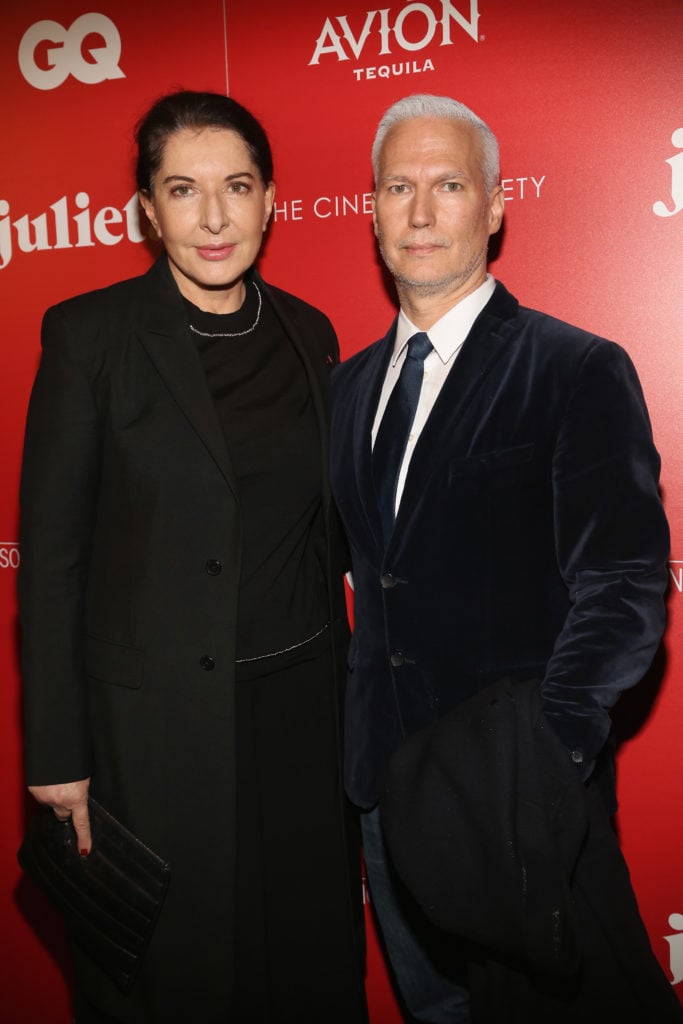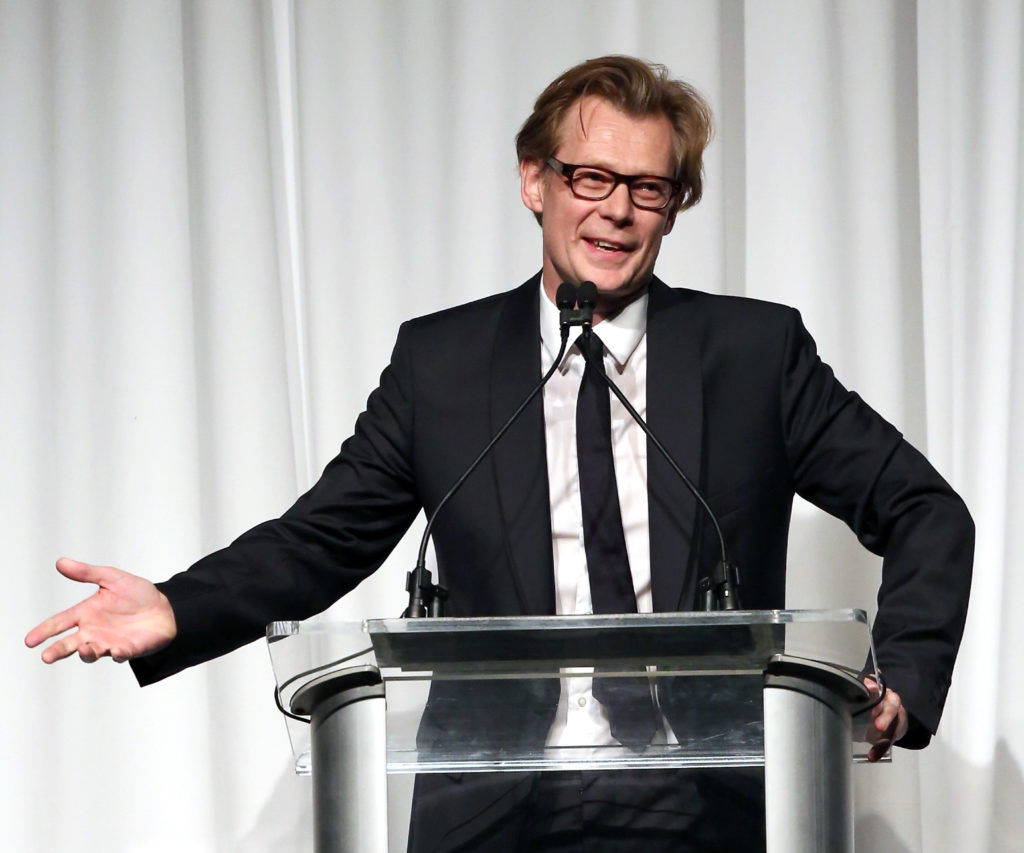People
MoMA PS1’s Klaus Biesenbach, a Champion of the Avant-Garde and Celebrities Alike, Will Now Lead MOCA LA
In a double loss for MoMA, its curator Laura Hoptman has also been named director of the Drawing Center.

In a double loss for MoMA, its curator Laura Hoptman has also been named director of the Drawing Center.

Sarah Cascone

Klaus Biesenbach, the director of MoMA PS1 in Queens and chief curator at large at the Museum of Modern Art, has been a mainstay of the New York art scene since he started at PS1 back in 1995. Now, he is setting his sights firmly on the West Coast. Today, the Museum of Contemporary Art (MOCA), Los Angeles, named the German-born curator as its new director.
MoMA’s director Glenn Lowry told the New York Times that Biesenbach “was an obvious candidate for MOCA.” In fact, the New York museum is losing two major contemporary curators at the same time. Shortly before Biesenbach’s appointment was announced, the Times reported that his colleague, MoMA’s painting and sculpture curator Laura Hoptman, had been tapped to direct the Drawing Center in SoHo.
In a statement announcing Biesenbach’s appointment, the co-chairs of MOCA’s board, Maurice Marciano and Lilly Tartikoff Karatz, described the curator as “one of the world’s most knowledgeable, wide-ranging, and innovative museum executives of contemporary art.” He was chosen from a list of 40 candidates and approved unanimously at the museum’s board meeting on Tuesday.

Marina Abramovic and Klaus Biesenbach. Photo by Sylvain Gaboury, ©Patrick McMullan.
During his time at MoMA, Biesenbach curated, among many exhibitions, the blockbuster 2010 Marina Abramovic retrospective “The Artist Is Present” and the roundly panned “Björk,” an ill-conceived tribute to the Icelandic songstress. An advocate for fusing genres and a champion of emerging artists, he organized MoMA’s Kraftwerk retrospective in 2012 and founded PS1’s “Greater New York” exhibition series, which features the work of young talents working in the area.
Biesenbach also became a local advocate in the wake of Hurricane Sandy in 2012, galvanizing public support for the hard-hit beach community of Rockaway, New York, where he has a home. His “Rockaway!” public arts festival is still ongoing, this year featuring the shimmering orbs of Yayoi Kusama’s Narcissus Garden.
Biesenbach, who trained to be a doctor before founding the Kunst-Werke Institute for Contemporary Art in Berlin and the Berlin Biennale, is likely to fit in well in Los Angeles. He already has a deep bench of celebrity friends and collaborators, including Lady Gaga, James Franco, and Madonna. During his tenure, he expanded MoMA PS1’s board from 11 members to 30 and more than doubled its budget.
As he transitions to the West Coast, Biesenbach inherits an institution in flux. Founded by collectors in 1979, MOCA has endured a turbulent past decade. The museum nearly closed during the financial crisis, but received a $30 million bailout from LA philanthropist Eli Broad in 2008. The director at the time, Jeremy Strick, resigned as part of the deal. He was succeeded by New York gallerist Jeffrey Deitch, whose tumultuous tenure was marked by the departure of longtime chief curator Paul Schimmel and criticism of a “celebrity-driven program.”

MOCA Director Philippe Vergne attends MOCA’s 35th Anniversary Gala. Photo by Jonathan Leibson/Getty Images for MOCA.
Philippe Vergne, the former director of the Dia Art Foundation in New York, took over the post in early 2014. Artist trustees John Baldessari, Barbara Kruger, and Catherine Opie returned to the fold after having resigned in protest of Schimmel’s departure, and the museum’s endowment grew from a low of just $5 million to more than $130 million. (MoMA PS1’s endowment, meanwhile, is considerably smaller, at $14 million.)
This March, MOCA found itself in the cross-hairs again after news broke that Vergne had fired chief curator Helen Molesworth, one of his key hires, amid reports that they clashed over the museum’s artistic direction. In May, it was announced that Vergne, too, would be leaving, the director and the institution having decided “by mutual agreement” not to renew his contract in March 2019.
Throughout the spring, reports swirled about the differing priorities of the museum’s curatorial staff, director, and board. Artist Lari Pittman, who stepped down from the board in February, told the Los Angeles Times at the time: “It’s a vision problem in what the board wants, what the director wants and what the curatorial team wants. Their visions are very different.”

Laura Hoptman. Photo by Nicholas Hunt, ©Patrick McMullan.
In the wake of the announcement, some observers noted that the museum—which has been criticized for an over-reliance on market-friendly, white, male artists—had missed an opportunity to appoint a leader who perhaps better reflects the diversity of Los Angeles. But MOCA’s leadership seems hopeful that it can present a united front behind its new appointment.
“I want everyone in our community to know that we’re thrilled to have Klaus Biesenbach join us,” Catherine Opie, who was on the search committee, said in a statement. “He comes to MOCA with a level of mutual trust with artists that is crucial for everything this museum does today, and that we hope it will be able to do in the future.” Biesenbach’s start date has not been announced.
Meanwhile, MoMA will lose another key staff member as Laura Hoptman leaves the museum to fill the vacancy left by Brett Littman, who in April became the head of the Noguchi Museum in Long Island City. She told the Times that she was looking forward to transitioning “from giant to miniature” in joining the small-scale museum, one of a number of alternative art spaces founded in New York City in the late 1970s and early ’80s.